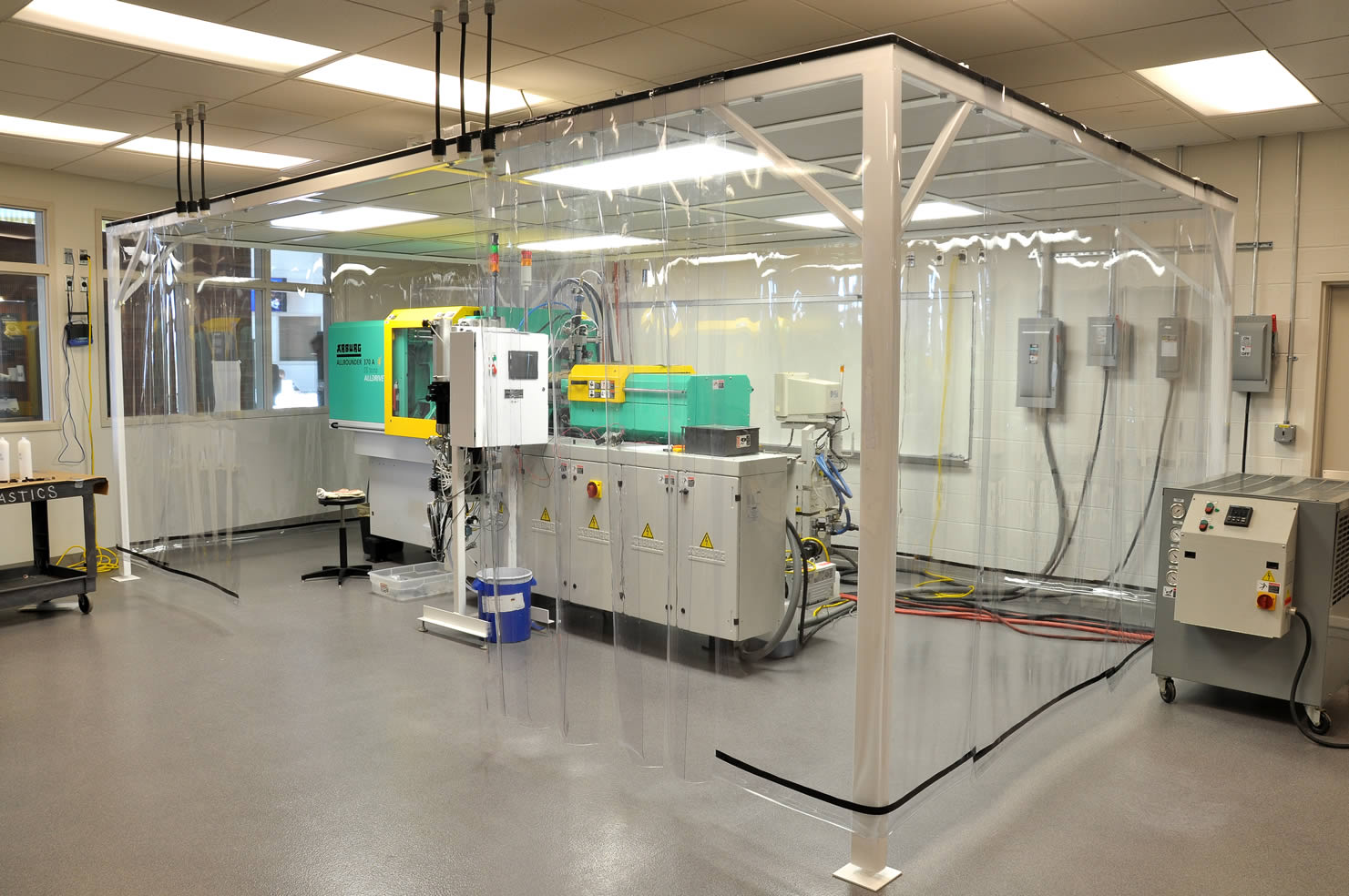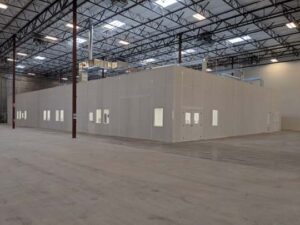Cleanrooms are essential in controlled environment technology, especially for the development and research of chemicals, pharmaceuticals, electronics, and other sensitive materials. At Modular Cleanrooms, we specialize in providing cleanroom solutions tailored to meet the specific needs of various industries, offering both hardwall and softwall cleanrooms to suit your project requirements.
Choosing the appropriate cleanroom structure is critical to ensuring both safety and efficiency. Let’s break down the differences between hardwall vs softwall cleanrooms, so you can make an informed decision based on your specific needs.
Softwall Cleanrooms: Portable and Flexible Solutions
Softwall cleanrooms are constructed with flexible vinyl curtains, offering portability and flexibility. These are ideal for projects requiring rapid deployment and adaptability, especially in industries like electronics and pharmaceuticals.
Key Benefits
- Portability and Flexibility: can be quickly set up and expanded, making them a great choice for temporary or dynamic projects.
- Cost-Effectiveness: With lower material and installation costs, they are an affordable solution, particularly for short-term or growing needs.
- Ease of Construction: They can be rapidly assembled, which is ideal for projects with tight timelines.
- ISO Cleanliness Classifications: Available in various ISO cleanliness levels to meet industry standards.

Limitations
- Cleaning: Vinyl curtains are more prone to accumulating dust and contaminants, which may require more frequent cleaning and maintenance.
- Lower Static Pressure: Have less stringent control over static pressure, making them less effective for environments that need tight particle control.
- Chemical Resistance: Not suitable for environments involving harsh chemicals, as the flexible vinyl material can degrade over time.
Hardwall Cleanrooms: Stability and Durability
Hardwall cleanrooms are constructed with solid prefabricated panels, offering a more rigid, permanent structure. These provide superior contamination control, making them ideal for industries with high standards for cleanliness, such as pharmaceuticals and semiconductor manufacturing.
Key Benefits
 Stability and Security: Maintain their structure over time, offering a long-term solution for critical applications.
Stability and Security: Maintain their structure over time, offering a long-term solution for critical applications.
- Ease of Cleaning: With smooth, non-porous surfaces, they are easier to clean and sanitize, reducing the risk of contamination.
- Higher Static Pressure: These can maintain higher static pressure, which is essential for preventing particulate intrusion in sensitive environments.
- Environmental Control: Allow for precise control of humidity, temperature, and pressure, which is crucial for industries like aerospace and semiconductor manufacturing.
Limitations
- Higher Initial Cost: Require a larger initial investment due to the materials and more complex installation process.
- Longer Setup Time: Compared to softwall cleanrooms, hardwall units take longer to install, which may be a consideration for projects with tight timelines.
- Less Flexibility: Once installed, they are more difficult to modify or expand compared to softwall cleanrooms, making them less adaptable for rapidly changing project needs.
Deciding Between Hardwall vs Softwall Cleanrooms
When deciding between hardwall vs softwall cleanrooms, the choice comes down to application requirements, budget, and future scalability.
- Application Requirements: Hardwall are best for industries requiring high levels of cleanliness and strict environmental controls. Softwall cleanrooms are ideal for flexible, temporary applications where rapid deployment is essential.
- Budget Considerations: Softwall are more cost-effective upfront, making them a popular choice for smaller-scale projects. Hardwall cleanrooms have higher initial costs but offer long-term value with greater durability and superior contamination control.
- Future Expansion: If you anticipate the need for growth or changes, softwall cleanrooms provide flexibility and can be reconfigured as your requirements evolve. Hardwall cleanrooms offer a more permanent solution but are less adaptable.
Real-World Applications
Pharmaceutical Manufacturing and Biotechnology Research
For critical applications such as pharmaceutical manufacturing and biotech research, hardwall provides the necessary precision in contamination control, ensuring compliance with stringent regulatory standards and maintaining high levels of safety.
Electronics Manufacturing
In electronics manufacturing, where precision is key, softwall offers an excellent balance between flexibility and cleanliness. These cleanrooms can be quickly deployed and adapted, making them a perfect solution for assembly lines with fluctuating needs.
Aerospace Manufacturing
In aerospace, where environmental control and contamination prevention are paramount, hardwall provides the highest level of security, ensuring that parts and systems meet the strict standards required for the industry.
Choosing the Right Cleanroom for Your Needs
When selecting between hardwall vs softwall cleanrooms, it’s essential to evaluate your project’s specific requirements. At Modular Cleanrooms, we specialize in designing and constructing both types of cleanrooms to fit your exact needs, ensuring compliance, efficiency, and reliability. We work closely with each client to ensure their cleanroom is tailored to their unique production needs, helping streamline workflows, minimize contamination risks, and ensure long-term performance.
Our expert team provides ongoing support, from initial design and installation to maintenance and expansion, ensuring that your cleanroom adapts to future growth and evolving industry standards.
